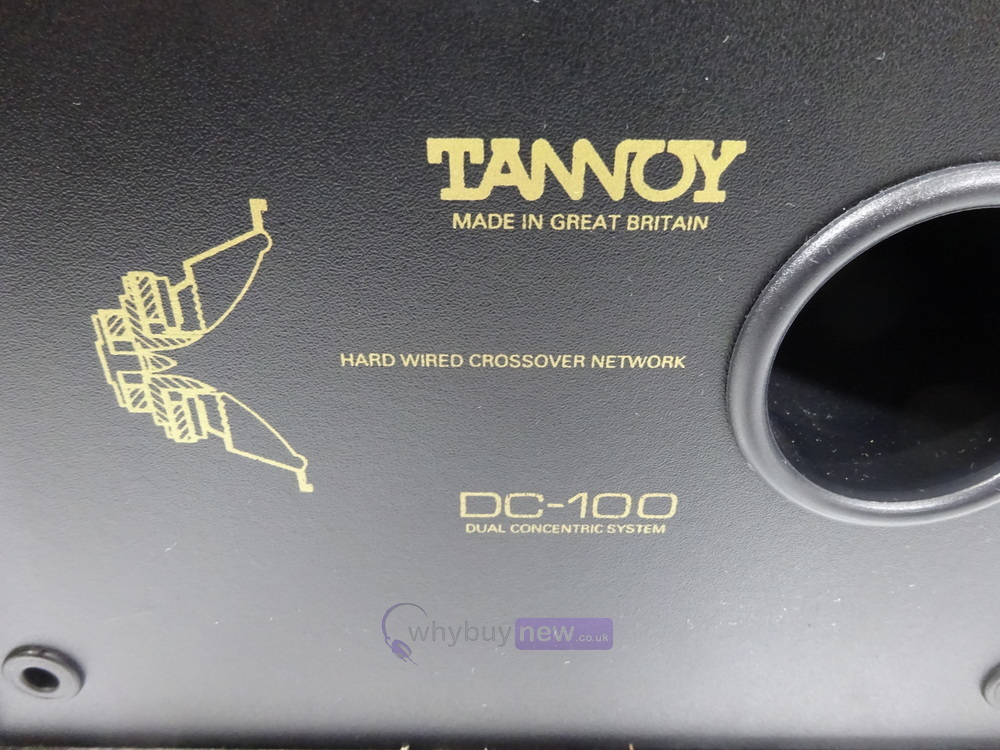

- #Tannoy dual concentric speaker drivers
- #Tannoy dual concentric speaker driver
- #Tannoy dual concentric speaker portable
The VX 8M has two Neutrik connectors on an inset speaker cable panel designed to protect the connectors from harm. The “M” part of the name comes from the speaker's ability to work as a floor monitor with 40- and 60-degree angles.
#Tannoy dual concentric speaker driver
Like the original VX 8, the VX 8M is a compact speaker with eight-inch dual concentric driver package. The latest entry to the VX line is the VX 8M.
#Tannoy dual concentric speaker portable
All are suitable for installed sound or portable PA use, and in most applications benefit greatly from the addition of a subwoofer.

All VX speakers offer birch cabinets, a variety of hanging/mounting options and black or white finish. The Tannoy VX family of concentric-driver speakers is a broad one, boasting a range of concentric designs from a diminutive five inches all the way up to 15 inches. The benefits of concentric speakers aren't quite as pronounced at live sound distances, but there are still benefits. Here the critical accuracy of the concentric design helped engineers hear what they needed to for the recording process. This means that all of the speaker's sound energy comes from the same point in space, eliminating the “smearing” of sound as it arrives at your ear from multiple discrete drivers.Īs the primary manufacturer of concentric speakers, Tannoy first made its mark in recording studios. The high-frequency driver sits inside the woofer, directing its output right down the middle of the cone.
#Tannoy dual concentric speaker drivers
In simple terms, concentric drivers stack the low- and high-frequency drivers together. Having said all that, KEF has not produced a single non uni-Q loudspeaker for decades and Andrew Jones, after KEF, went into ELAC where they produce their own vesion of the concept, receiving good reviews.Īnd during all that, the BBC LS3/5a remains a legend and B110 and T27 command high prices.You've probably heard of concentric drivers, but may not know what they are. But most people don't listen in ideal rooms, don't have room treatment and left/right hemispheres of the rooms are hardly symetrical, hence one can't really expect a great stereo image or even same frequency response coming from the left and right. In controlled measurements in an ideal room, the concentric drivers, well placed on a suitable enclosure, should prevail, by at least a tiny margin. There are so many compromises made in designing a loudspeaker that I doubt the single point source concept outweighs all the rest. Especially the aspects that affect external looks, seem to more follow a fashion trend or wife acceptance criteria rather than solid engineering findings. Allowing for the technical solutions that have become obsolete or superseded by others, I find that many or most manufacturers of loudspeakers don't really use all of that expertise in their products.

There has been a lot of research and a lot of expertise has been gathered over the past several decades. Problems including diffraction and directivity maladies due to the mid range surround affecting the tweeter's low end response made them introduce the uni-q in the entry level models rather than the reference. The midrange as well had to use a stronger magnet as it lost the core material.Īccording to KEF as well, it took them several generations to make coaxials sound good. If they had a sales organization as effective as Bose or Klipsch, in older times until now- we'd likely see Tannoys all over the place, IMHO.Īccording to KEF, concentric drivers were not viable until neodymium became available as magnet material, offering strong but tiny magnets for the tweeter that needs to be tiny to fit within the midrange's voice coil area. It's just that, IME, the fact that Tannoy can't market or distribute their way out of the proverbial paper bag- that is why they're not any more popular than they are. That said- IMHO- Tannoys from the 1990s and newer (from the time of the Churchill Wideband and beyond)- they have seemed to consistently get everything pretty much right. And even there, there's some "quirks" about them (primarily small response deviations from flat response), that can make them not match what some people want to hear. Tannoy, IMHO, is about the only people who have reliably "gotten it right". Many fail the second (forcing the woofer to go too high in frequency, and/or rolling off in the top octave badly, which can result in harsh and/or dull soud), and even more fail the third (the tweeter gives up when asked to provide life-like transients). Dual concentrics are harder to do well than other designs- primarily, due to the difficulty of building a concentric tweeter that will simultaneously fit, cover the needed frequency range (from below 1KHz to above 20KHz, ideally), and handle the dynamics and max output level correctly.


 0 kommentar(er)
0 kommentar(er)
